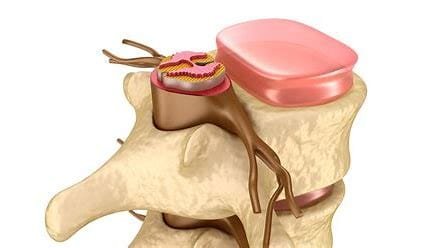Introduction

Disc Neocleoplasty is a new, minimally invasive procedure used to treat herniated discs in the spine. The procedure could become an alternative to conventional surgical methods. It offers hope to disc-related pain patients by giving them minimal recovery time with minimal complications of surgery. As more patients seek the most effective yet less invasive spinal treatments, it becomes more essential to understand the procedure, its benefits, and its implications.
Understanding Herniated Discs
One has to understand first what kind of condition disc neocleoplasty aims to solve. That is the condition called herniated discs. The spine is composed of vertebrae, intervertebral discs, and nerves. The discs are thought of as shock absorbers between each vertebra.
Sometimes they can become damaged or degenerate for some reasons, such as aging, trauma, or repeated strain. This condition is brought about when the soft inner jelly-like substance of a disc called the nucleus pulposus breaks through a tear in its outer layer called the annulus fibrosus and, in the process, pushes against nearby nerves compressing them, leading to various symptoms like pain, numbness, and weakness within the affected area. Medical treatments for herniated discs include physical therapy, drug therapy, and surgical options such as discectomy or spinal fusion.
What is disc neocleoplasty?
Disc neocleoplasty, often termed percutaneous neucleoplasty, is a procedure that attempts to rejuvenate the integrity of herniated discs by employing a special instrument in order to remove part of the bulging nucleus pulposus. In this procedure, either radiofrequency energy or a mechanical pump is employed to decompress the disc, thereby relieving pressure on the nerves and associated pain.
Preoperative Evaluation: This assessment takes place preoperatively. Imaging studies will then include an MRI or a CT scan that help to determine the level of disc herniation and potential suitability for this treatment.
Anesthesia: This procedure may be offered with local anesthesia supplemented with sedation. Under this modality, a patient remains awake but comfortably drowsy.
To gain access to the disc the surgeon makes a small skin incision over the location of the affected disc area. Using fluoroscopic guidance or real-time X-ray imaging, the surgeon takes great care to insert a thin needle into the disc space.
Decompression: Once the needle is properly positioned, a special catheter is passed through the needle into the nucleus pulposus. The surgeon can then use a radiofrequency device to vaporize a small portion of the disc material, which reduces volume and decreases pressure on the nerves surrounding the area. A mechanical device can be used to aspirate the herniated material.
Closure: The needle is withdrawn and the incision closed with a sterile dressing. It is usually a matter of less than an hour to complete the whole process.
Postoperative Care: The patients are observed in the ward for a short term and then discharged. However, most patients can normally continue with their daily and working lives within a very few days, depending upon their rate of recovery, without many restrictions.
Advantages of Disc Neocleoplasty

One of the greatest advantages of disc Neocleoplasty is that it is a minimally invasive procedure. It does not have big incisions as in open surgery, which disturbs fewer tissues surrounding it. As a consequence, fewer postoperative pains and faster recovery are produced.
Reduced Hospital Stay: Most patients can receive the procedure on an outpatient basis, thereby eliminating an extended hospital stay. That saves time and reduces the healthcare cost.
Rapid Recovery: Patients usually take a shorter time to recover than with traditional surgical techniques. Many patients can go back to normal activities in days rather than weeks or months.
Disc Neocleoplasty can relieve most of the pain and symptoms caused by herniated discs. Through this procedure, patients are usually relieved of the pressure exerted on the nerves, allowing them to get better and enjoy a quality life with less restriction.
Preservation of Disc Structure: The procedure aims at leaving behind maximal disc structure without removing excessive portions. This will prove important to maintain stability and function of the spine, as excessive removal could prove detrimental.
Minimally Invasive Nature
Therefore, Disc Neocleoplasty Complication Rate Low
Disc Neocleoplasty is one of those treatments that is less invasive in comparison with open surgeries. Due to this reason, the complications associated with disc Neocleoplasty are less as compared to open surgeries. Infections, blood loss, and complications in anesthesia administration are some of the things that happen with a low probability with this surgery.
Character Specific: Based on the characteristic features of the herniation, this treatment is so individualistic that disc Neocleoplasty would treat an individual effectively as well as increase his/her level of satisfaction.
Conclusion

Disc Neocleoplasty is an advancement in the treatment of herniated discs. It offers a safe, effective, and minimally invasive alternative for patients who want relief from spinal pain. Its many benefits include quicker recovery times and reduced risks, making it a more compelling alternative to traditional surgical approaches. Just like every medical procedure, the best course of action is best decided after discussing the treatment option with your doctor for your particular case. Continued research into novel disc Neocleoplasty and other techniques may yield superior results for spine-afflicted patients.



